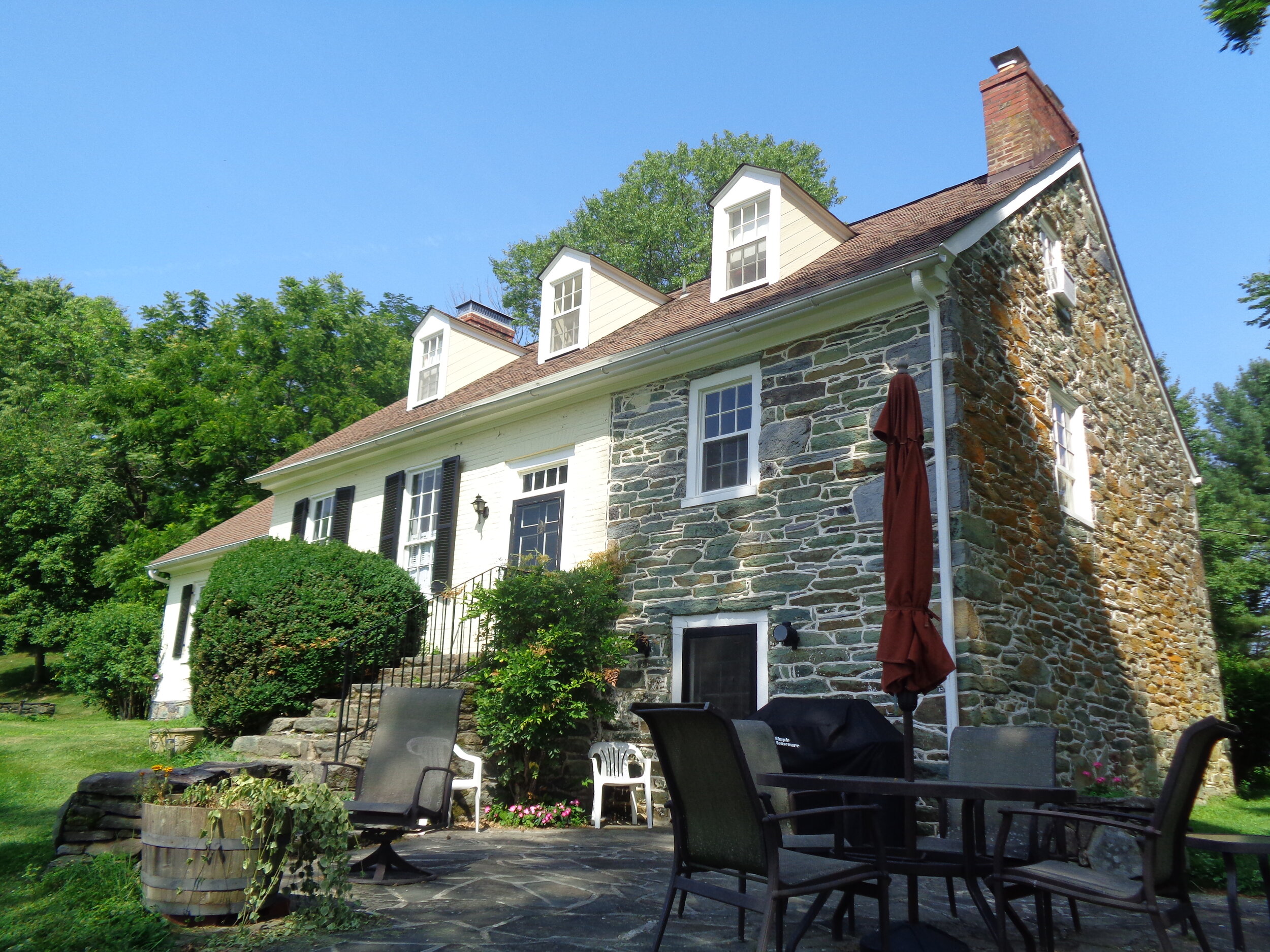In addition to Harford and Frederick counties, Murphy & Dittenhafer Architects is working with Calvert County and Peace and Plenty historic district in Frederick County to develop the guidelines that protect and preserve historic sites.

Calvert County

Every community has a unique history that is passed down in stories and practiced in rooted traditions, but many historical details also are told through community landmarks, where those stories come to life in the details of Architecture.
“It’s an interesting journey to dig into the history of a community and find what is so special about each place,” says Rebecca McCormick, Architect with Murphy & Dittenhafer Architects.
Thanks in part to grant funding from the Maryland Historical Trust, both Harford and Frederick counties in Maryland have been working with M&D to create Historic Preservation Guidelines. In addition, the firm started creating guidelines for Calvert County, as well as historic district “Peace and Plenty” within Frederick County.
‘A lot of benefit’
Rather than cataloging historical sites, these guidelines give the residents and community leaders a set of best practices that are reviewed by and help Architects, contractors, and the general public as they rehabilitate properties.
Historical structures are recognized at various government levels. Generally, federal and state levels don’t have oversite to what owners can do with their properties, but they do provide protection of properties.
On a local level, historical properties do have to follow guidelines set forth and reviewed by the County Historic Commissions.
“Designating your sites not only protects them but increases property values and helps with the overall development of a community,” McCormick says. “There’s a lot of benefit, and it’s all voluntary for a community to go through this process.”
Giving the community voice
The rural farm community of “Peace and Plenty” in Frederick County is made up of large agricultural complexes, where many of the farm structures are historic but have to be modified to fit modern farming practices.
Beyond the buildings, McCormick is looking at open landscapes because those also have an impact on historic guidelines and preserving the way a place looks.
“The great thing is that Frederick County is including many of the farmers and property owners in the discussion to learn their needs. That will help create guidelines that help preserve that history and community identity while also being in tune to what the farmers need,” she says. “It takes a community working together to make these guidelines helpful to everyone involved.”
The guidelines are meant to address all situations in the community, including landscape features like ponds or rivers, mountains, and even crops.
“We often think of a community’s identity in the buildings, but there are so many other things that bring meaning,” McCormick says. “Preserving that, with every member of a community represented, can be very empowering.”
Murphy & Dittenhafer Architects is working hard and collaborating with the community on an urban planning study for South George Street in York City.
“Historic preservation has always been a hallmark of ours for our 40-year history,” says M&D President Frank Dittenhafer II. These 10 projects exemplify our passion for this work.
It’s the 40th year of Murphy & Dittenhafer Architects, so Frank Dittenhafer II, President, is taking the time to highlight some of our most influential projects over the decades.
We’re celebrating 40 years of influence in Pennsylvania and Maryland. With that, we couldn’t help but reflect on some of the most impactful projects from our history.
Harford Community College’s expanded new construction Chesapeake Welcome Center is a lesson in Architectural identity
At Murphy & Dittenhafer Architects, we feel lucky to have such awesome employees who create meaningful and impressive work. Meet the four team members we welcomed in 2024.
The ribbon-cutting ceremony at the new Department of Legislative Services (DLS) office building in Annapolis honored a truly iconic point in time for the state of Maryland.
As Murphy & Dittenhafer architects approaches 25 years in our building, we can’t help but look at how far the space has come.
Murphy & Dittenhafer Architects took on the Architecture, Interior Design, & Overall Project Management for the new Bedford Elementary School, and the outcome is impactful.
The memorial’s groundbreaking took place in June, and the dedication is set to take place on November 11, 2024, or Veterans Day.
President of Murphy & Dittenhafer Architects, Frank Dittenhafer II, spoke about the company’s contribution to York-area revitalization at the Pennsylvania Downtown Center’s Premier Revitalization Conference in June 2024. Here are the highlights.
The Pullo Center welcomed a range of student musicians in its 1,016-seat theater with full production capabilities.
“Interior designs being integral from the beginning of a project capitalize on things that make it special in the long run.”
Digital animations help Murphy & Dittenhafer Architects and clients see designs in a new light.
Frank Dittenhafer and his firm work alongside the nonprofit to fulfill the local landscape from various perspectives.
From Farquhar Park to south of the Codorus Creek, Murphy & Dittenhafer Architects help revamp York’s Penn Street.
Designs for LaVale Library, Intergenerational Center, and Beth Tfiloh Sanctuary show the value of third places.
The Annapolis Department of Legislative Services Building is under construction, reflecting the state capital’s Georgian aesthetic with modern amenities.
For the past two years, the co-founder and president of Murphy & Dittenhafer Architects has led the university’s College of Arts and Architecture Alumni Society.
The firm recently worked with St. Vincent de Paul of Baltimore to renovate an old elementary school for a Head Start pre-k program.
The market house, an 1888 Romanesque Revival brick structure designed by local Architect John A. Dempwolf, long has stood out as one of York’s premier examples of Architecture. Architect Frank Dittenhafer is passing the legacy of serving on its board to Architectural Designer Harper Brockway.
At Murphy & Dittenhafer Architects, there is a deep-rooted belief in the power of combining history and adaptive reuse with creativity.
University of Maryland Global Campus explores modernizing its administration building, which serves staffers and students enrolled in virtual classes.
The Wilkens and Essex precincts of Baltimore County are receiving solutions-based ideas for renovating or reconstructing their police stations.
The firm has earned the designation annually since 2016 in recognition of its commitment to supporting newer professionals in the field.
















































To round out our 40th-year celebrations, enjoy 10 more impactful and diverse Architecture projects designed by M&D. These projects, most of which have received design awards, confirm the variety in design (from scale to usage) that we continue to be involved in today.